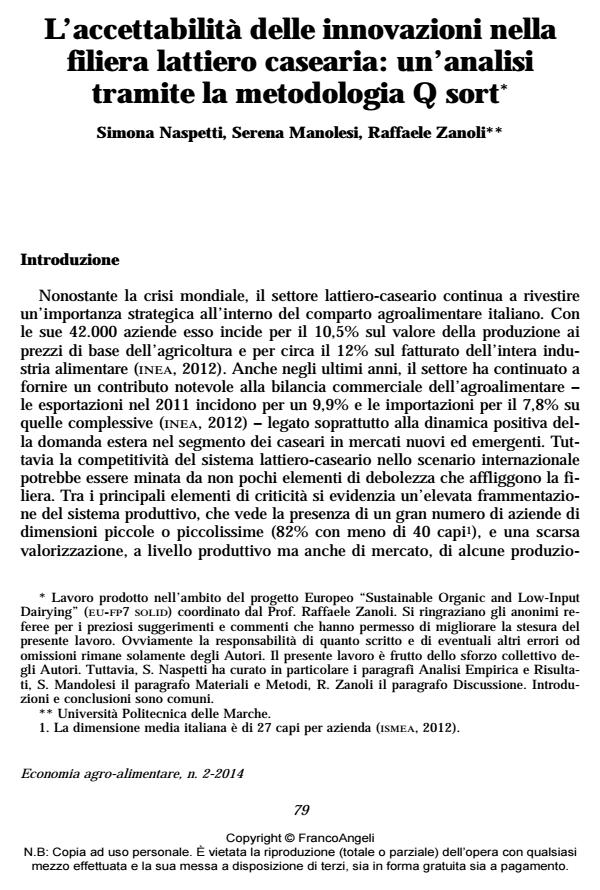L’accettabilità delle innovazioni nella filiera lattiero casearia: un’analisi tramite la metodologia Q sort
Titolo Rivista ECONOMIA AGRO-ALIMENTARE
Autori/Curatori Simona Naspetti, Serena Mandolesi, Raffaele Zanoli
Anno di pubblicazione 2014 Fascicolo 2014/2
Lingua Italiano Numero pagine 17 P. 79-95 Dimensione file 150 KB
DOI 10.3280/ECAG2014-002005
Il DOI è il codice a barre della proprietà intellettuale: per saperne di più
clicca qui
Qui sotto puoi vedere in anteprima la prima pagina di questo articolo.
Se questo articolo ti interessa, lo puoi acquistare (e scaricare in formato pdf) seguendo le facili indicazioni per acquistare il download credit. Acquista Download Credits per scaricare questo Articolo in formato PDF

FrancoAngeli è membro della Publishers International Linking Association, Inc (PILA)associazione indipendente e non profit per facilitare (attraverso i servizi tecnologici implementati da CrossRef.org) l’accesso degli studiosi ai contenuti digitali nelle pubblicazioni professionali e scientifiche
This work illustrates the acceptability of innovations in the Italian dairy supply chain. The research is part of a larger study financed by the EU Commission (EU-FP7 SOLID - "Sustainable Organic and Low-Input Dairying") aimed at optimising the financial, agronomic and nutritional aspects of the organic and low input dairy sector. Several studies demonstrate how the development and the adoption of innovations are critical in improving and increasing the competitiveness of the supply chains (es. Stewart-Knox & Mitchell, 2003). In this work, the Q methodology was applied to investigate the innovation acceptability to organic and low input dairy supply chain members (Consumers, Farmers and Retailers & Processors). The aim was to identify and analyse different and common opinions of the Q participants. The results showed two different perspectives. The first one is a ‘sustainable’ view, shared by the majority of participants to the Q study; the second one is more practical, and mostly adopted by farmers. Some methodological and strategic implications are also presented in detail.
Parole chiave:Dairy, organic, low input, innovation, Q methodology, supply chain
Jel codes:Q01, Q18, Q21, Q56
- Exploring rural tourism experiences through subjective perceptions: A visual Q approach Wookhyun An, Silverio Alarcón, in Spanish Journal of Agricultural Research /2020 pp.e0108
DOI: 10.5424/sjar/2020183-16572
Simona Naspetti, Serena Mandolesi, Raffaele Zanoli, L’accettabilità delle innovazioni nella filiera lattiero casearia: un’analisi tramite la metodologia Q sort in "ECONOMIA AGRO-ALIMENTARE" 2/2014, pp 79-95, DOI: 10.3280/ECAG2014-002005